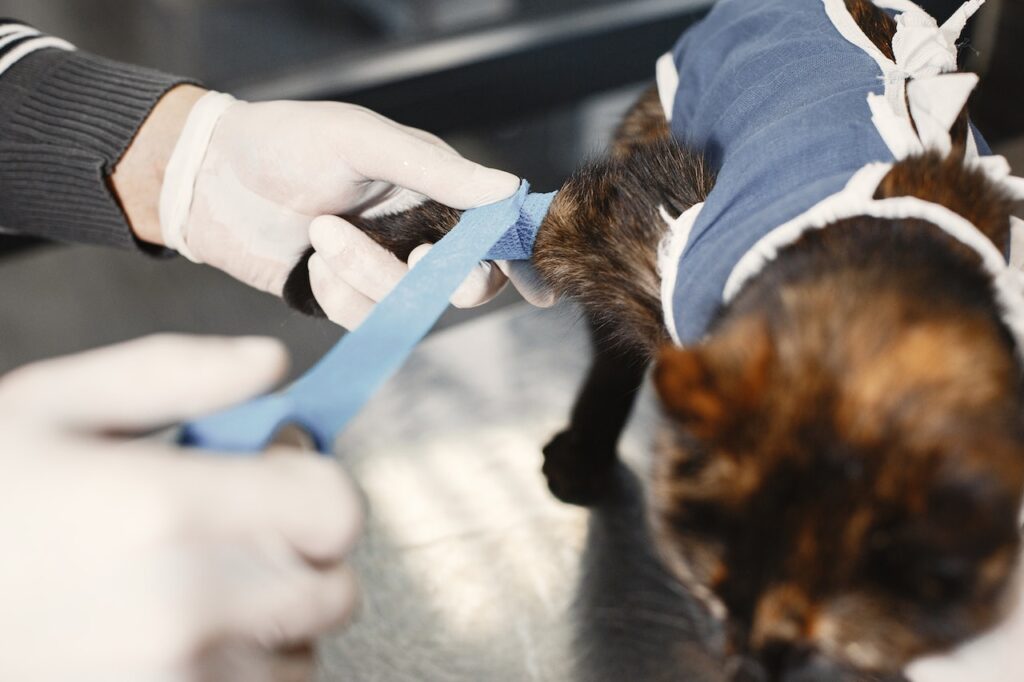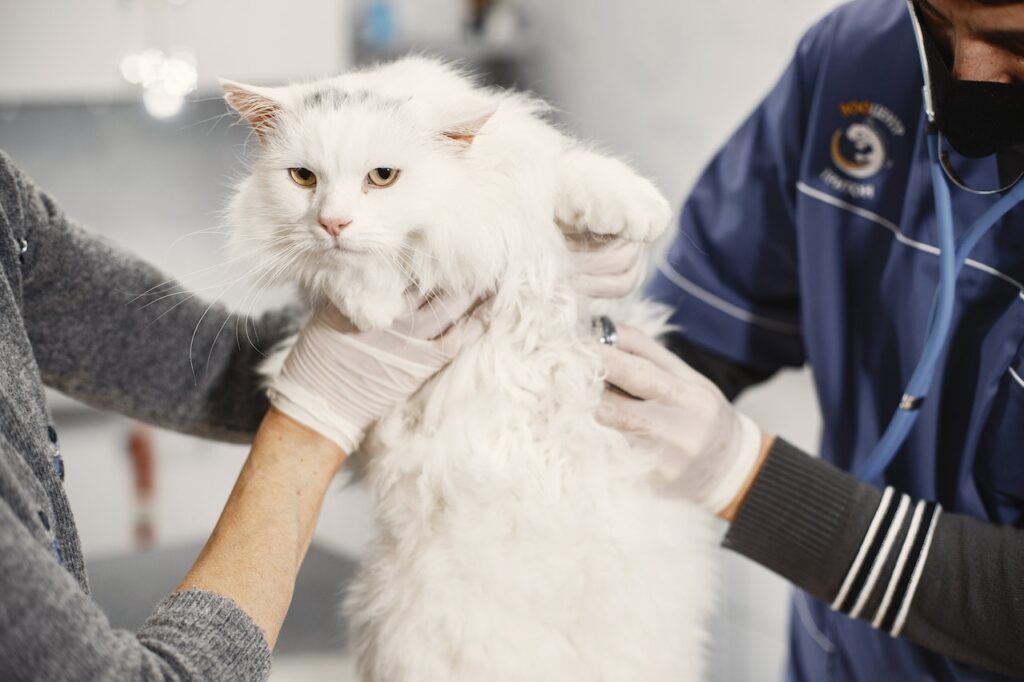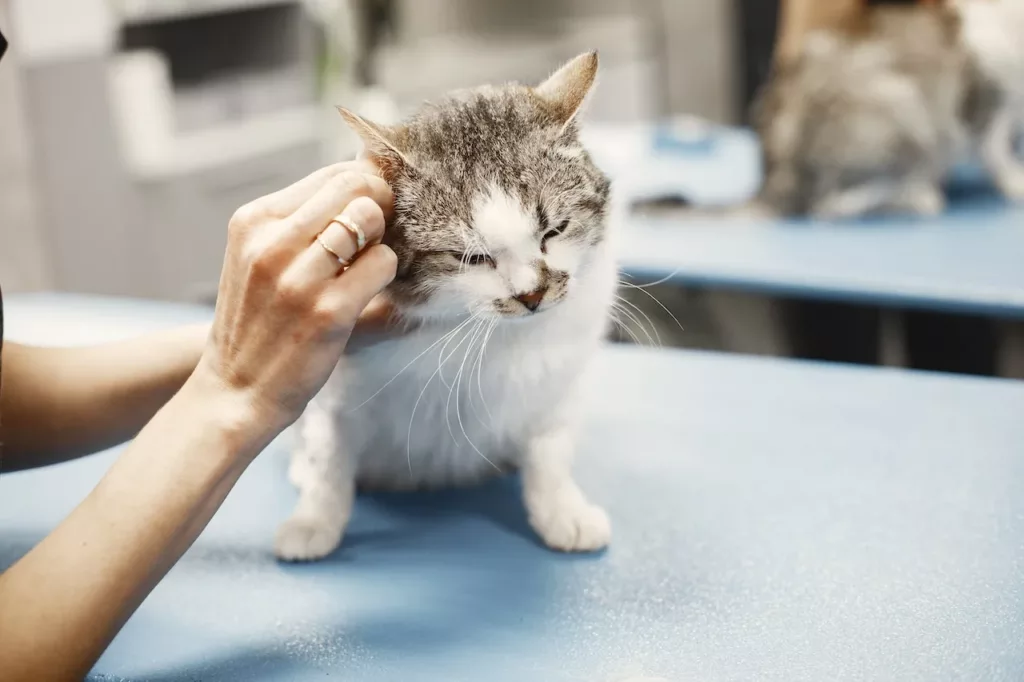Having pets in our lives is a wonderful feeling because they complete our family. Likewise, we need to take care of them to ensure their happiness and health. For this reason, many pet owners, especially those with cats, wonder how to take care of a cat. And “How often do you take a cat to the vet?” Many people believe that cats are healthy pets and do not need veterinary care as often as dogs. However, this is completely false! Cats, just like dogs, need regular medical checkups to stay healthy.
Table of Contents

Today’s blog post is about how often you should take a cat to the vet. Cats are capable of taking care of themselves, but they still need regular medical checkups. You will need to take your cat to the vet much more often, even if they are not showing any symptoms of illness. However, going to the doctor is not always a pleasure for you and your cat. Cats have an aversion to veterinarians, so going to the vet is probably the last thing your cat wants to do. That’s another reason why cat owners avoid scheduling routine checkups with the vet.
You may be interested : Can cats eat Avocado? Why is avocado toxic to cats?
According to a survey, less than 50% of cat owners take their pets to the vet every year. The frequency and stages at which a cat should see a veterinarian confuse many people. The response varies from cat to cat. Young kittens, for example, require more vet visits than adult cats. On the other hand, we should examine sick cats on the advice of the veterinarian. Cats need many things to stay healthy, including vaccinations and weekly or monthly checkups.
If you own cats, you should know how often I need to take my cats to the vet. The answer depends on a few variables, including age, health and lifestyle. The cat veterinarian’s schedule is greatly affected by each of these elements. Vet visits should be scheduled according to the medical needs of the cat’s age. Therefore, you must first be aware of your cat’s age and when you need to take him to the vet.
You need to take your cat to the vet at least once a year, even if he is playful and seems to be in good health. This way, you’ll be aware of minor medical problems and can catch them before they develop into more serious issues. These routine exams will note every little detail, including obesity, injuries, and medical problems. A cat’s age can be divided into three main stages:
- Kittens: 6 weeks to 16 weeks
- Adults: From 1 to 7 years.
- Elderly: More than 7 years
- Kittens (birth – 1 year)
How often do you take a cat to the vet?
Kittens (0 – 1 year)
Has your cat recently had a kitten? If so, you will be thrilled to have a kitten. You will need to make an appointment with the vet because you want to take good care of the little ones. The age range for kittens is up to one year. Until they are four or five months old, you need to take care of them. The vet advises that you take them once a month.
During the first sixteen weeks after birth, you will need to see a veterinarian at least every three to four weeks. Your cat or kittens will receive a series of vaccinations from your veterinarian during this time. These vaccinations protect your furry children from a variety of contagious and potentially fatal diseases.
Also read : 16 Cats with big ears.
You may be curious about what happens at the veterinary clinic. The veterinarian always performs a thorough physical examination during these visits, from the tail to the health exam. During the exam, the kittens are checked for signs of illness and their eyes, ears and mouth are checked for infections. In addition, the heartbeat is monitored and the abdomen is palpated. Your veterinarian may occasionally recommend a blood test for feline leukemia and feline immunodeficiency virus in kittens that are 8 to 12 weeks old or older. This is because these two serious viruses are often present at this young age.
Your cat will receive its next vaccination from your veterinarian at 9 to 12 weeks of age. To help you control your cat’s anger and destructive behavior, some veterinarians also offer classes on grooming techniques, socialization activities and litter box training.
Older cats (1 year – 10 years)
It is best to take your adult cat to the veterinarian for a checkup at least twice a year or every six months. Most of these appointments include cleanings, exams and vaccinations for the mouth. The answer to the question of whether pet cats need to be vaccinated against rabies and distemper is yes, they do! Every one to three years, cats need booster vaccinations.
There are additional tests, such as physical examinations and examination of stool samples for parasites. If you have an adult cat that enjoys good health, a regular exam once a year is sufficient. However, if your cat is ill or has a chronic disease such as diabetes or kidney disease, it will need ongoing care.
You should bring the names and dosages of any medications, foods or supplements your cat is currently taking. All of this private information is necessary for the veterinarian to diagnose the cat’s condition and determine the best course of action. You are also welcome to ask your veterinarian any questions you may have.

Read more : Can Cats Eat Rice?
Senior cats (10 years +)
Since older cats are more susceptible to disease, they require special care and attention. For this reason, the veterinarian often advises to change the diet and treatment regimen of the patient.
Therefore, you should visit the vet at least two to three times a year if your cat is older than seven years. This is necessary because cats require special care in addition to routine examinations such as a complete physical examination and a CBC (blood test for chemistry and thyroid). This is because serious health problems such as arthritis, obesity, kidney and liver problems are more common in older cats.
It is important that the cats do not show any signs of pain or discomfort due to their extreme caginess. Therefore, do not be fooled by this behavior and think that they are healthy. Avoid this misconception by trying to visit the vet regularly. In this way, routine examinations can rule out health problems that could later develop into serious ones.
Tips for taking the cat to the vet
Now that you know how often your cat needs to go to the vet, you should take certain precautions before taking him to the vet. Because vet visits are a very unpleasant experience for cats.
To make it easier for you:
- Get used to putting your cat in a carrier as soon as it is a puppy so that it will become accustomed to it and the experience won’t be frightening when the time comes to take it to the vet (or anywhere else).
- Don’t try to talk him into it on the day of the visit until the very last minute. Allow him to succeed and reward him with toys and prizes.
- It is advised to cover the carrier with a thin cloth while traveling and when entering the clinic to reduce the amount of visual stimulation, but take special care not to block the ventilation.
- Talk calmly to your pet at the same time to let him know you are there for him.
- Avoid setting the carrier on the ground at the vet clinic if there are lots of animals nearby.
- After the consultation, be considerate of the cat’s space when you get home. Allow it if you feel a little disoriented from the trip and want to flee for safety.
When you need to take your cat to the vet
Even if you bring your cat in for routine checkups, you should make an appointment with your veterinarian immediately if your cat appears sick or unhealthy.
Therefore, you should take your cat to the vet if you notice anything unusual about him. Here are some typical symptoms of illness and malaise in cats:
- Chills or signs of hypothermia.
- Avoidance of the litter box.
- Excessive licking.
- Lack of appetite.
- Hiding, howling, and crying.
- Runny nose, sneezing.
- Unusual lumps or growths.
- Sudden weight loss.
- Bleeding from the nose or eyes.
- Cough.
- Paw dragging.
- Labored breathing.
- Tiredness and weakness.
- Repeated vomiting.
Final thoughts: How often do you take a cat to the vet?
If you notice any disease-related symptoms in your pet, you should see a veterinarian immediately. But as we have already mentioned, the symptoms are not always obvious. How often should the cat then go to the vet? If a cat has not yet been diagnosed with a disease, the recommendation is usually based on the age of the cat. In general, it is recommended that children under 7 years of age be examined once a year and every six months thereafter. This is the case even though diseases do not have an “age”, many of them tend to affect cats more frequently as they get older.

Also, read: How long can cats go without food? When should I become concerned if my cat isn’t eating?
In conclusion
How often do you take a cat to the vet? That depends entirely on how often you take your cat to the vet. Your pet should not only go to the vet when he is sick. Routine checkups at the vet are necessary even when there are no medical problems or emergencies. This way, you can nip serious health problems in the bud before they get worse. Now you know how often you should take your cat to the vet.
References: FREQUENCY OF VETERINARY VISITS, 10 WARNING SIGNS YOUR CAT NEEDS TO GO TO THE VETERINARIAN , Feline Immunodeficiency Virus
